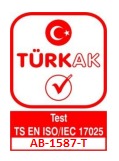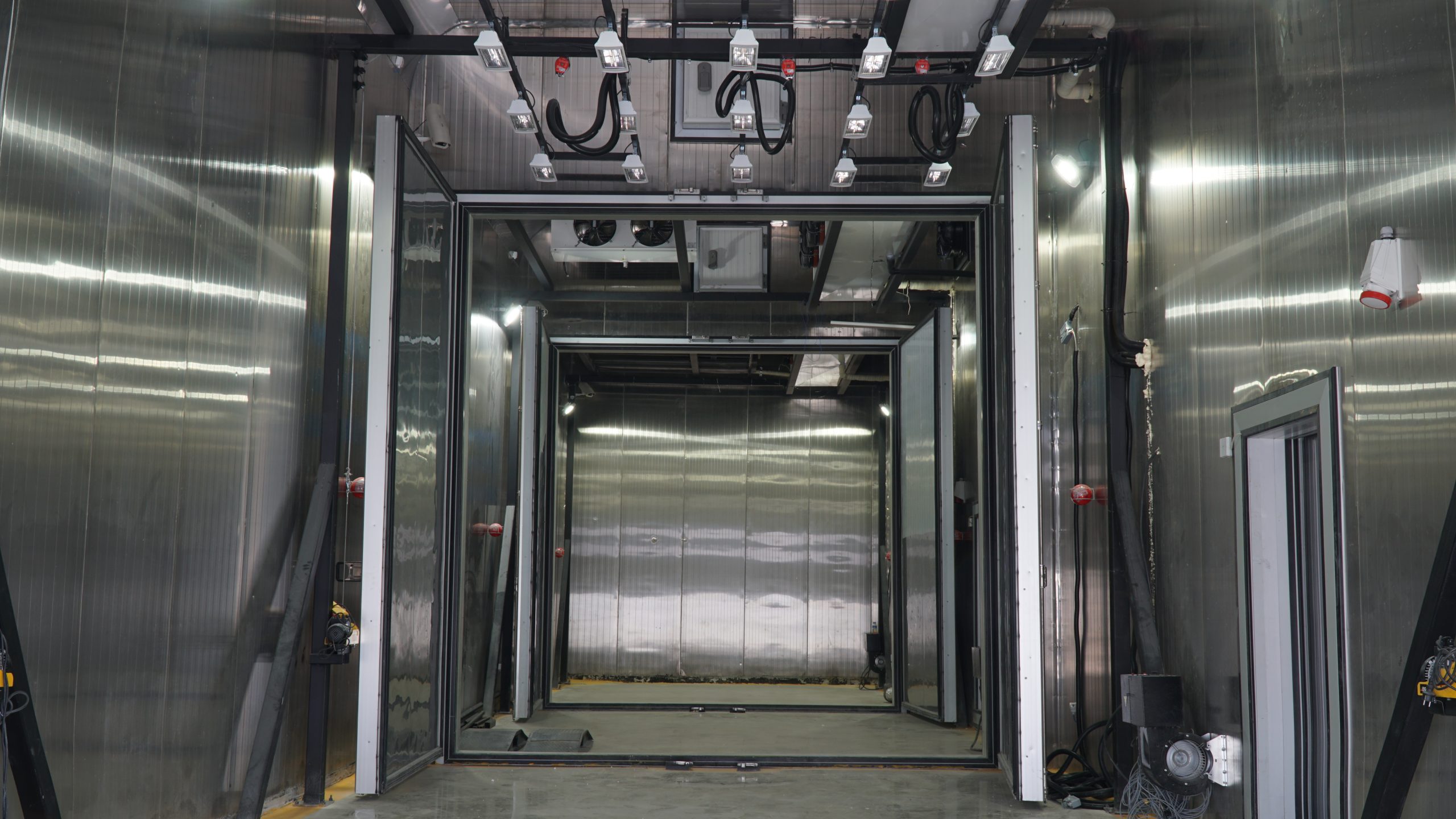Thermal Shock Test
MIL-STD-810 F/G/H — RTCA DO 160 G — AECTP -300

Termal şok testi, ürünlerin ani sıcaklık değişimlerine karşı dayanıklılığını değerlendirmek amacıyla uygulanmaktadır. Gerçek kullanım koşullarında bir ekipman, çok kısa süre içinde yüksek sıcaklıktan düşük sıcaklığa (veya tam tersi) maruz kalabilir. Bu test, malzemenin yapısal bütünlüğünü, sızdırmazlığını ve fonksiyonel performansını doğrulamaya yöneliktir.
Amaç:
- Ani sıcaklık değişimlerinin malzeme üzerinde yaratabileceği genleşme, büzülme ve mekanik stresleri değerlendirmek.
- Elektronik bileşenlerde lehim noktaları, bağlantılar ve kaplamalar üzerindeki etkileri ölçmek.
- Sızdırmazlık, izolasyon ve fonksiyonel çalışma kabiliyetini test etmek.
Uygulanan Prosedürler:
- Prosedür I – Hava ile Termal Şok: Numune, farklı sıcaklık odaları arasında hızlı bir şekilde taşınarak ani sıcaklık geçişlerine maruz bırakılır.
- Prosedür II – Sıvı ile Termal Şok: Numune, farklı sıcaklıklardaki sıvılara daldırılarak çok kısa sürede sıcaklık farkına tabi tutulur.
Teknik Uygulama:
Termal şok testleri MIL-STD-810 ,RTCA DO-160 ,IEC, ISO, EN, ETSI, ASTM ve benzeri birçok ulusal ve uluslararası standarda uygun şekilde gerçekleştirilmektedir.
Standards and Methods
- MIL-STD-810F Method 503.4
- MIL-STD-810G Method 503.5
- MIL-STD-810H Method 503.7

Enviromental Test Chamber Specifications
| Drive-In 1 | Drive-In 2 | Drive-In 3 | Drive-In 4 | Drive-In 5 | Drive-In 6 | Measurement unit | |
| Width | 6000 | 6000 | 9500 | 12000 | 15500 | 21500 | mm |
| Size | 4900 | 4900 | 4900 | 4900 | 4900 | 4900 | mm |
| Height | 4000 | 4000 | 4000 | 4000 | 4000 | 4000 | mm |
| Humidity Change Range | %20 RH ile %99 RH | %20 RH ile %99 RH | %20 RH ile %99 RH | %20 RH ile %99 RH | %20 RH ile %99 RH | %20 RH ile %99 RH | % |
| Temperature Change Rate | 3°C/minute (max) | 3°C/minute (max) | 3°C/minute (max) | 3°C/minute (max) | 3°C/minute (max) | 3°C/minute (max) | °C |
| Minimum Temperature | - 45 °C | - 45 °C | - 45 °C | - 45 °C | - 45 °C | - 45 °C | °C |
| Maximum Temperature | + 80 °C | + 80 °C | + 80 °C | + 80 °C | + 80 °C | + 80 °C | °C |
| Air Conditioning Chamber 1 | Air Conditioning Camber 2 | Measurement unit | |
| Width | 1000 | 2600 | mm |
| Size | 1000 | 2600 | mm |
| Height | 1000 | 2000 | mm |
| Humidity Change Range | %20 RH ile %99 RH | %20 RH ile %99 RH | % |
| Temperature Change Rate | 3°C/minute (max) | 3°C/minute (max) | °C |
| Minimum Temperature | - 70 °C | - 65 °C | °C |
| Maximum Temperature | + 150 °C | + 80 °C | °C |
CONTACT BY EMAIL
[email protected]
VOICE COMMUNICATION
+90 (312) 905 06 90

STANDART KONTROL VE TEST HİZMETLERİ A.Ş.
